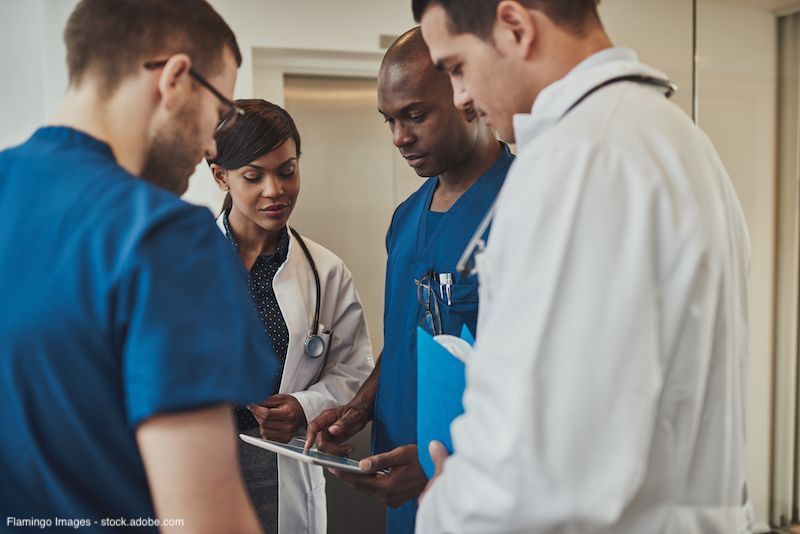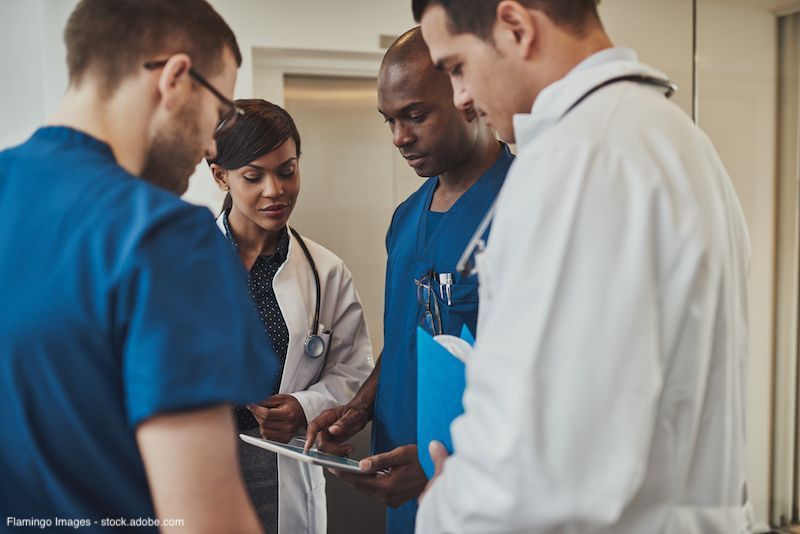Article
Restarting and optimizing your urology practice in the COVID-19 era
Author(s):
Urologist Henry Rosevear, MD, shares what his practice is doing to continue working while also keeping physicians, staff, and patients safe.
Dr. Rosevear is a urologist in community practice in Colorado Springs, CO. Urology Times blogs present opinions, advice, and news from urologists and other urology professionals. Opinions expressed by bloggers are their own, and do not necessarily reflect the views of Urology Times or its parent company, MJH Life Sciences.
Henry Rosevear, MD

I don’t know about everyone else, but to say that clinic life in Colorado Springs over the last few months has been a bit hectic is an understatement. At one point, I was having my wife bring toilet paper from my own house to the office for my staff as the lack of personal hygiene products was starting to interfere with their ability to work!
Now that things have calmed down, I wanted to share some strategies that we are using to efficiently run clinic while keeping ourselves, our staff, and our patients safe.
Before we go into those details, let’s make it clear that all recommendations depend on the status of coronavirus disease 2019 (COVID-19) in your local area. Everyone needs to be smart and safe about re-opening. Just as Tip O’Neill was right when he said that “all politics is local,” virus responses should also vary based on your local volume and capabilities.
With that being said, why open your clinic at all? On the one hand, the Centers for Medicare & Medicaid Services’ 1135 waiver, which basically removed all of the previous exceptionally onerous rules about telemedicine, remains in effect, so any patient who can be effectively seen via a telemedicine visit (and remember that phone calls are now equivalent for video conferencing), should be seen via telemedicine. The downside that we are seeing with this approach is that some of our in-office ancillary technology is being used less. Examples of this include bladder scans and uroflows for the treatment of BPH. This is reducing the data that I as a physician have to make a clinical decision and is also affecting our clinic’s revenue.
On the other hand, we found that for new patients, getting the required demographic and insurance information as well as completing a full H&P (to include the past medical/surgical/social/family and review of system) was very challenging via telemedicine, so we are now bringing most new patients into the office. Certainly, higher risk patients can and should be kept out of the office unless they have to be seen. This too is an exercise in common sense. If a visit to my office will prevent a visit to an ER, then certainly bring the patient in, but if I can provide equivalent medicine over the phone, that’s what I’ll do.
That also holds true for prioritizing care for patients where a delay in treatment would cause harm. One of the more interesting observations about this pandemic is that a difference has developed between the total numbers of deaths reported in a country and those that can be explained by the normal mortality rate and the virus itself. (Here is an interesting Economistarticle on that subject.). Anecdotally, patients who would otherwise be seeking care for non-COVID-19-related illnesses are delaying treatment and presenting sicker. My brother is an ER doctor and he has lots of stories of patients with chest pain not seeking care until it is too late. With that in mind, my office is still aggressively seeing our patients for whom a delay in treatment would be detrimental.
And what about you and your staff? We can’t provide excellent health care to our patients if we can’t keep our staff and ourselves safe. The CDC recommends establishing areas for the care of patients without COVID-19. Both staff and patients entering these areas should be screened with questions regarding health status as well as with temperature checks. It goes without saying that hand hygiene and general office cleaning are vital to preventing the spread. Efforts should also be made to ensure patients are kept 6 feet apart not only from each other but from staff whenever possible.
And what about masks? The CDC recommends that health care workers wear surgical masks unless they are providing care that would require an N95 mask. Our patients should be asked to wear cloth masks, and we should be prepared to offer masks to any patient who doesn’t have one. Lastly, the number of patients congregating in small spaces such as waiting rooms should be minimized. We are doing this by having some patients wait in their cars until they can be seen. We are also limiting the number of family members that join patients for office visits.
Lastly, everyone should develop a plan on how they would respond to local or a hyper-local recurrence. A local recurrence is easy; we’ve been through this before. Everyone should know what supplies they need and what the financial implications are if your office is told by local authorities to stop elective cases or issues a stay-at-home order. What about a hyper-local recurrence? Specifically, what happens if you show up to work one Monday and half your staff is sick? What if all of the doctors in the office are sick? How do you cover call and other emergent patients? Every office should plan now for such a catastrophic case now.
The most important lesson I’ve learned both personally and professionally from this pandemic is simply a lesson I was taught in Navy (and which originally came from the British Army) called the 7P’s: “Proper Planning and Preparation Prevents Piss Poor Performance.” Stay safe and carry on everyone!
















